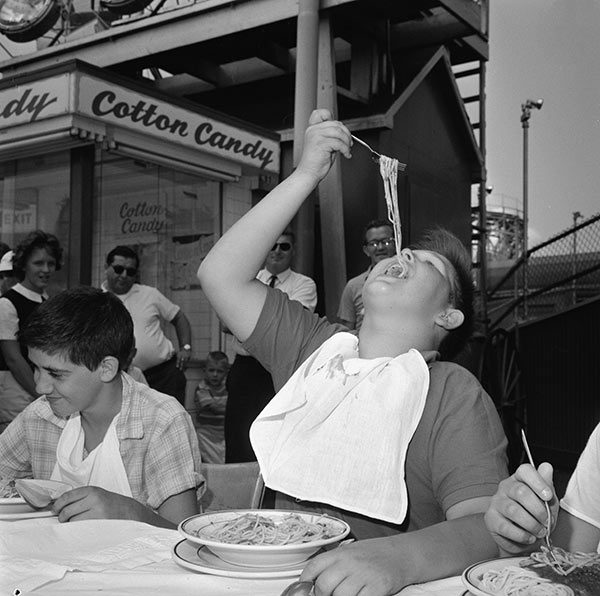
No matter where you travel in New Jersey, you’re never far from an Italian restaurant. Sometimes there are more than one on a given block. And that’s not counting pizzerias.
“When you open a restaurant in New Jersey, automatically you think Italian,” says Anthony Calandra, one of the heads of his family’s bakery, restaurant, hotel and retail enterprises in North Jersey. “We’re so daring that we opened up three Italian restaurants within five miles of each other.”
There are reasons for this plenitude. One is that New Jersey is home to a lot of Italian-Americans. According to the U.S. Census Bureau (setting aside margin of error), the state has the fourth highest number of households identifying themselves as of Italian ancestry, after New York, Pennsylvania and California. In percentage of households of Italian ancestry, we rank third, with 17 percent, after Rhode Island (19.3) and Connecticut (18.7).
Another reason is that in the restaurant business Italians are well known for supporting Italian restaurants. Calandra estimates that, while he likes steakhouses, when he eats at restaurants other than his own he eats Italian 70 to 80 percent of the time.
That isn’t hard to do here. “There are 20,000 eating and drinking businesses in New Jersey, ranging from the hot-dog vendor on the boardwalk to the big catering facility,” says Deborah Dowdell, executive director of the New Jersey Restaurant Association. “I can’t answer how many are Italian, but there’s no doubt we have more Italian restaurants in the state than any other kind. In New Jersey, Italian food is part of our heart and soul.”
Clearly, you don’t have to be Italian to love Italian food. Who doesn’t love Italian food? Technically, Italian is ethnic, like Chinese or Mexican. But no one thinks of it that way. Spaghetti and meatballs, pizza, subs (hoagies), eggplant parmesan and similar menu staples aren’t just Italian dishes, they’re all-American foods.
It wasn’t always this way. Most Italian immigrants to this country came from the poor, hardscrabble south of the Italian boot. Theirs was a peasant food, and it had no prestige. Mayflower and blue-blood America regarded the fondness Italian and other European immigrants had for vino with derision and distaste. Part of the impetus for Prohibition was to corral the supposedly profligate drinking and carrousing of the newest arrivals.
Yet we have those immigrants to thank for some of the most identifiable Italian foods. “They brought with them the pizza and pasta and the red gravy,” says Michael Huber, a chef/educator at the Academy of Culinary Arts at Atlantic Cape Community College in Mays Landing. “We still have lots of those dishes today, and they can be great.” Freed from Old World scarcity, Italians in the New World made big portions a hallmark of their cooking.
Italians didn’t invent noodles, but they have done more with them than any other people. The number of shapes we Americans know seems large, but pales beside the number that give every region of Italy its own culinary identity. Ravioli is just a starting point for the realm of stuffed pastas that include tiny tortellini, bigger tortelloni, floppy, triangular fazzoletti and many more. The range of possible fillings is endless, but the remarkable thing is that no matter how fanciful pastas get, they basically consist of just three or four elementary ingredients—flour, water, salt and, sometimes, eggs.
That simplicity is at the heart of Italian food’s success. But in the world of upscale dining it also long kept Italian from receiving the recognition it deserves as one of the world’s broadest and deepest cuisines. In Huber’s estimation, only French and Chinese rank alongside it.
The overshadowing by French cuisine was particularly irksome to those who know Italian at its best. But French cooking, renowned for its sauces and its depth of technique, always had the edge. “I went to culinary school in France, I’m a Francophile and I go there as often as I can to learn as much as I can,” says Huber. “But I think French is too complicated for most people. A French recipe is, like, 30 ingredients. An Italian recipe is, like, three. But the whole idea is that it’s three really great ingredients put together in a way that makes the dish.”
When you think about it, it’s no coincidence that the Slow Food movement began in Italy, in 1986. (There are now three chapters in New Jersey—North, Central and South.) Slow Food’s Manifesto, adopted in 1989, included the declaration, “Let us rediscover the flavors and savors of regional cooking and banish the degrading effects of Fast Food.”
These days every ambitious restaurant follows the mantra of “fresh, seasonal, local.” Well, whaddya know? That’s where the best Italian cooking has been all along. Rutgers alum Mario Batali, through his books and TV shows and size umpteen orange clogs, had a lot to do with people recognizing the depth and breadth of la cucina d’Italia. Indeed, principles of Italian cooking by now have influenced most American chefs. When you peek under the lid, a lot of that newness turns out to be old-school Italian.
Click on the links below to read stories from our Italian Food special feature.
Pass the Pasta
Jersey is blessed with many compelling Italian restaurants. here are 16 of our favorites.
Where Real Italians Eat
We find out where prominent New Jersey Italian celebrities like to eat.
Nonna Knows Best
Breathes there an Italian chef who didn’t learn to love food and cooking at the knee of mamma or nonna (grandmother)? Assolutamente no!
Masters of "Mutz"
Fresh, hand-made mozzarella is a treasure, and jersey does it best.
Miracle Cure
Letting air and nature do most of the work, Salumeria Biellese in Hackensack produces acclaimed
sausages and hams just like in the Old Country.
